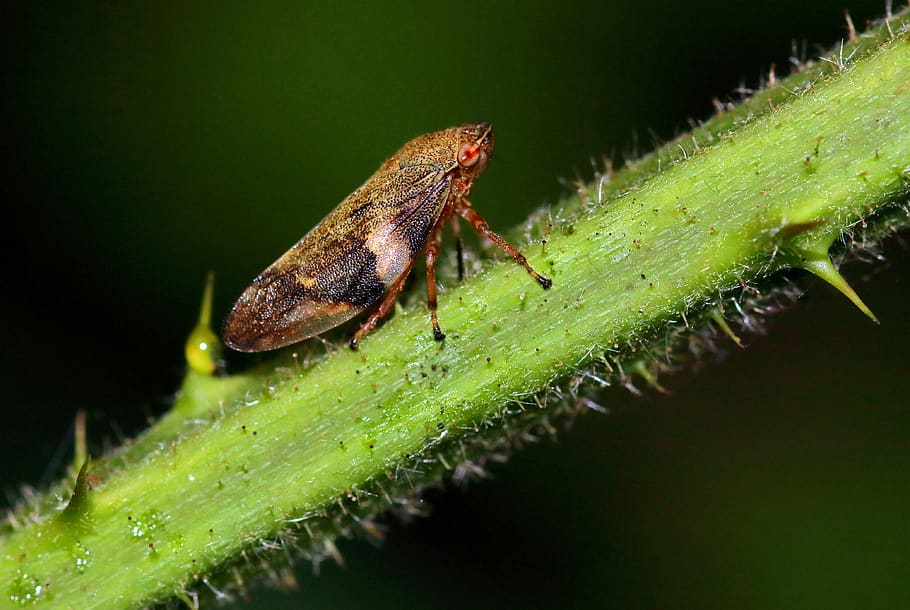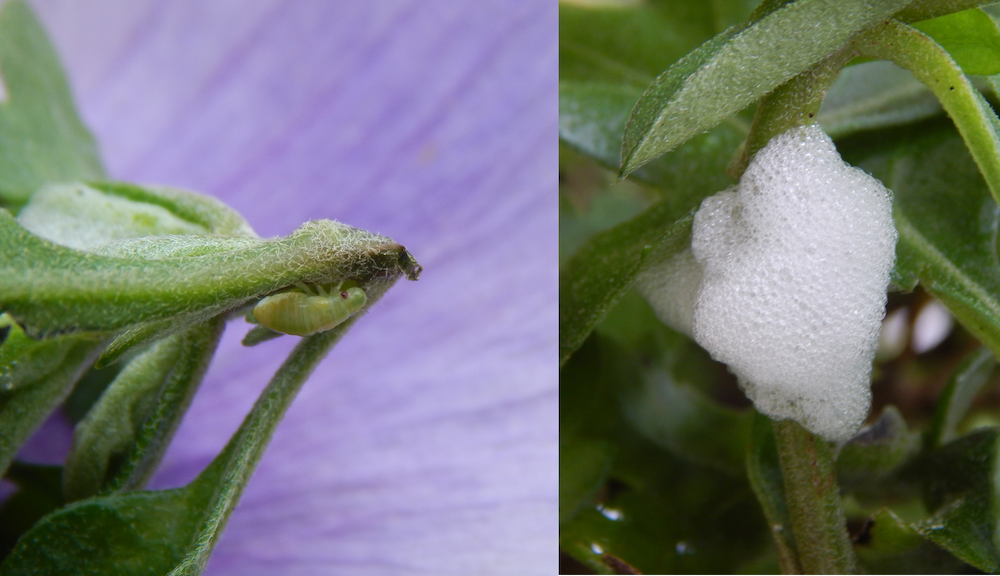Spittlebugs, also known as froghoppers (Cercopoidea), get their names from the traits that they possess. Spittlebugs produce ‘spit’ by chewing on the leaves and stems of plants. They can also jump very high, which is where the name froghopper comes from.

Adult Spittlebug on the stem of a plant. Photo credit: Emphyrio, Pixabay.
As nymphs, spittlebugs create a bubbly substance as they chew part of the plant and spit it back out. During this process, they puncture the stem of a plant and draw out its juices. Spittlebugs may be challenging to identify on their own, but once they create the frothy mass that they encase themselves in, they are easy to spot. This foamy mass protects them from predators and other parasites. Use this link to send insect identification questions to the MyWoodlot team.
Spittlebugs do not have just one host plant, but they feed on a variety of non-woody plants. Some plants that spittlebugs may feed on are ornamental grasses, clover, and goldenrod. Aside from these plants, you can find them in open grassy areas which is their ideal habitat. Spittlebugs are typically harmless to plants unless there are many on one plant, which may damage the leaves.

Spittlebug on stem of plant encased in foamy mass. Photo credit: GalleryOfHope, Wikimedia Commons.
You may start to notice spittlebugs in late April or early May as they emerge and look for food. During the months of September and October, female adult spittlebugs lay their eggs in leaf litter. Although spittlebugs are not active during the winter, spittlebug eggs can survive in leaf litter over the winter and emerge during spring. If you have leaf litter in your yard, it is best to leave it rather than mow or rake it, as it provides habitat for wildlife. This article provides environmentally friendly tips for managing leaf litter.
Spittlebugs play a significant role in the environment by contributing to biodiversity and the food chain. They act as a food source for many birds so if you happen to find them in your garden, just leave them. It is unlikely that they will disturb your garden, unlike other invasive pests, so do not turn to pesticide use. Pesticides will not be effective as the spittlebugs are protected by their enclosure, and natural predators rely on them for food, naturally controlling the population.
Additional resources:
University of Minnesota Extension factsheet about spittle bug





